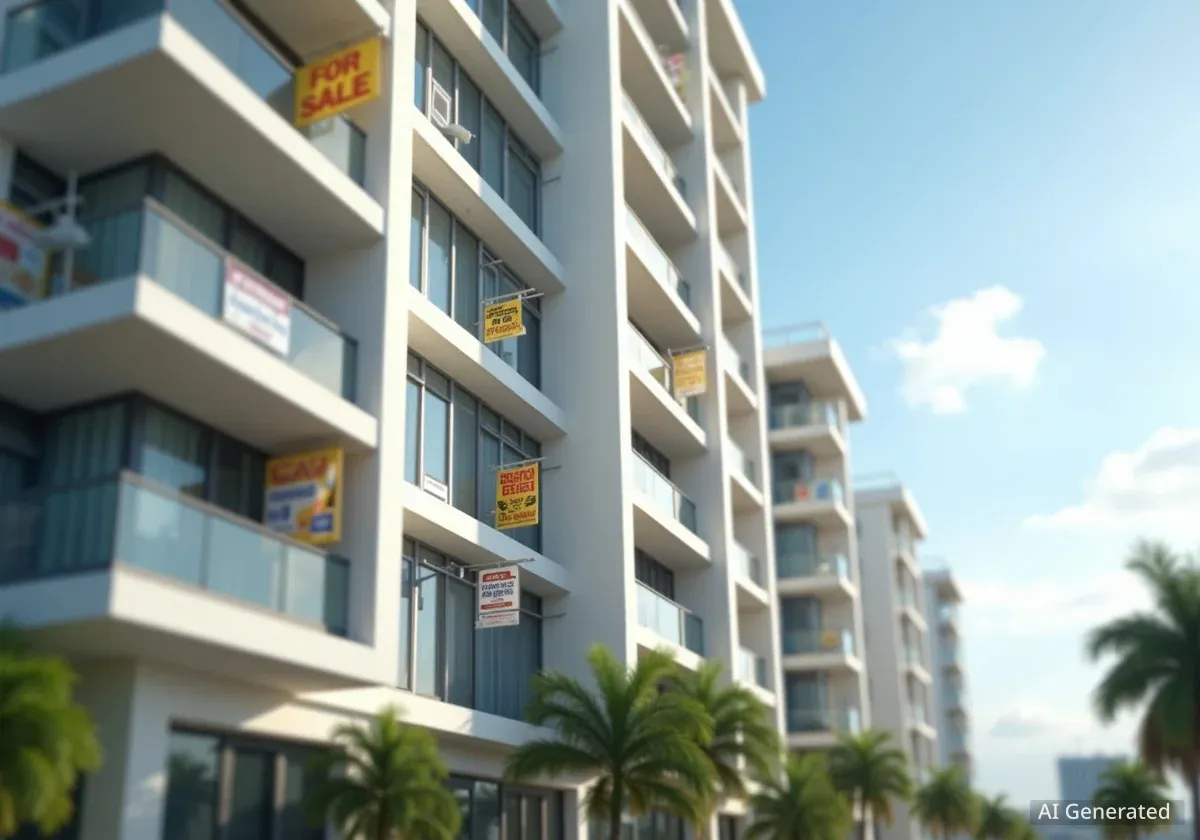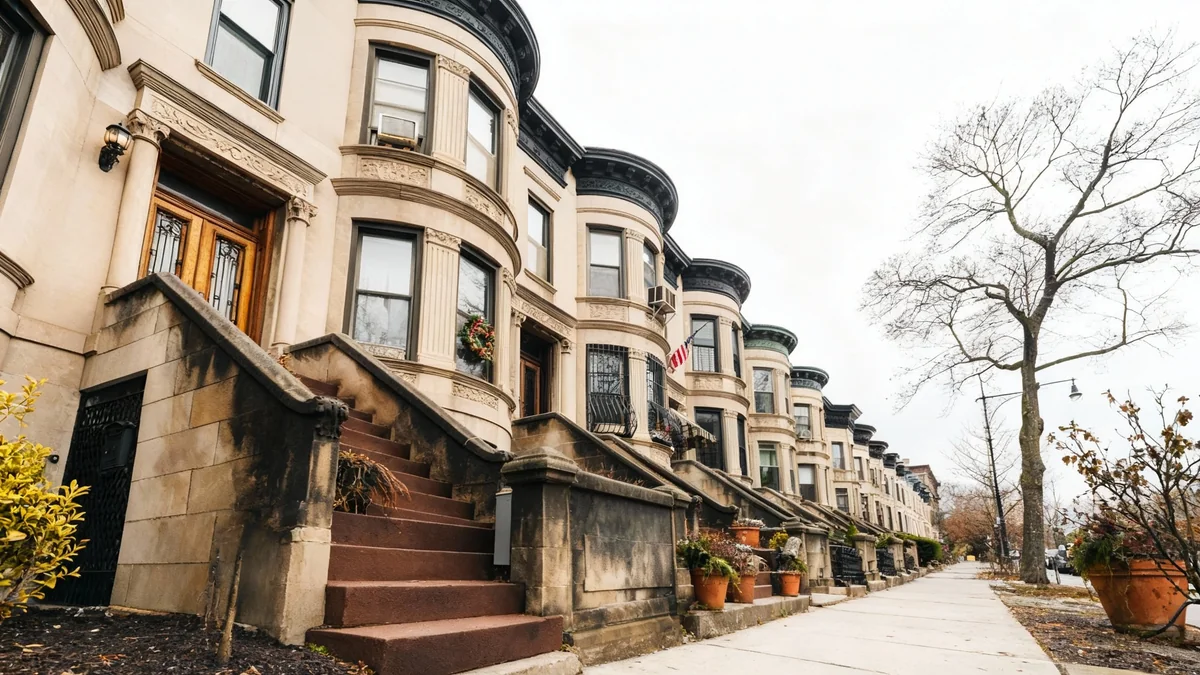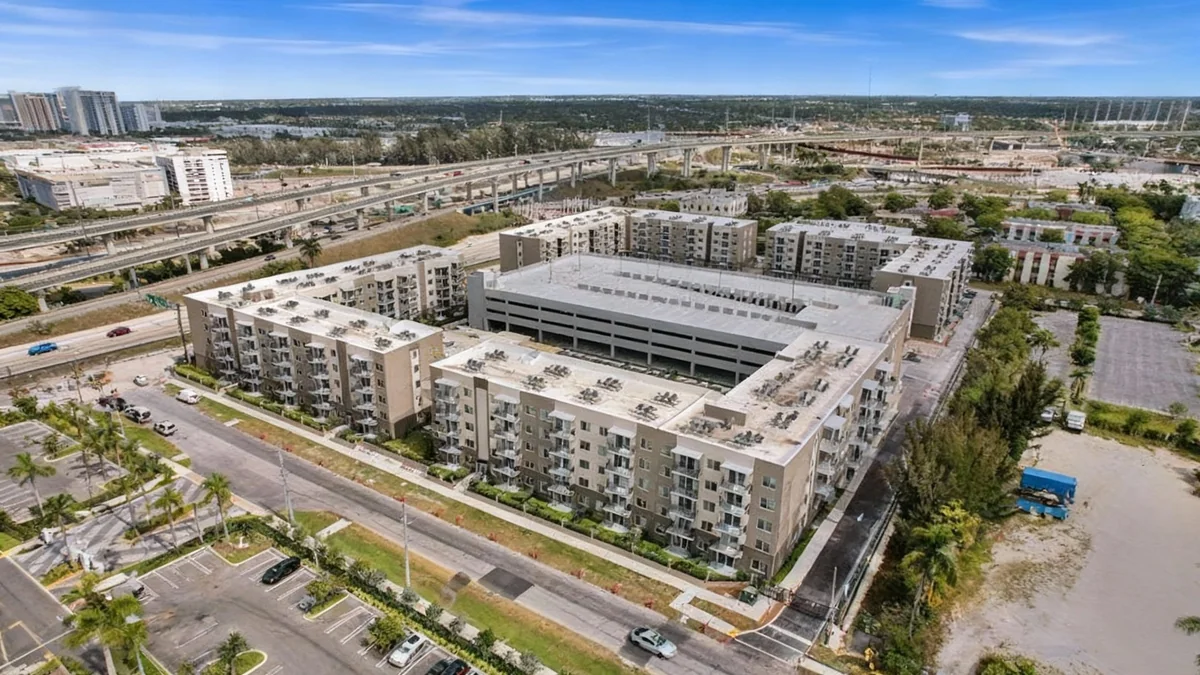South Florida's real estate market is currently experiencing significant challenges. A recent analysis by CBS News Miami, featuring expert George Theodore, highlights a troublesome ranking for the region. This deep dive into market conditions suggests a complex landscape for both buyers and sellers.
Key Takeaways
- South Florida's real estate market faces significant issues.
- The region has received a "troublesome ranking" in recent analyses.
- Expert insights point to market complexities for buyers and sellers.
Understanding the Current Market Environment
The real estate sector in South Florida, known for its dynamic growth, is now navigating a period of uncertainty. Various factors contribute to the current situation. These include shifts in demand, rising interest rates, and changes in buyer affordability.
According to George Theodore, a real estate expert, the market's performance is not uniform across all segments. Some areas experience more pressure than others. This creates a varied picture for investors and potential homeowners alike.
Market Snapshot
- Median home prices in some South Florida counties have seen
modest declines over the past quarter. - Inventory levels have
increased by 15% in certain metropolitan areas compared to the previous year. - Average time on market for properties has also risen, suggesting a shift from a seller's market.
Factors Impacting Affordability
Affordability remains a major concern in South Florida. High property values, combined with increasing mortgage rates, make homeownership difficult for many residents. This trend affects first-time buyers and those looking to upgrade their homes.
Interest rates have played a crucial role in this shift. As the Federal Reserve adjusted its monetary policy, borrowing costs increased. This directly impacts monthly mortgage payments, reducing purchasing power for many prospective buyers.
"The interplay of high property valuations and elevated interest rates creates a significant barrier to entry for a large segment of the population," stated George Theodore during the CBS News Miami discussion. "We are seeing a clear impact on buyer demand and market velocity."
Historical Context
South Florida's real estate market experienced rapid growth during the pandemic, driven by an influx of new residents and low interest rates. This led to significant price appreciation. The current market adjustments reflect a normalization phase, albeit one with notable challenges.
Regional Disparities and Local Trends
While the overall outlook suggests trouble, specific sub-markets within South Florida show different trends. For instance, luxury segments may behave differently from entry-level housing. Coastal properties often maintain higher values due to limited supply and high demand.
Urban cores might face different challenges compared to suburban areas. The migration patterns observed during recent years continue to influence these localized dynamics. Some areas still attract significant investment, while others grapple with slower sales.
Impact on Renters
The challenging real estate market also affects renters. High demand for rental units, coupled with property owners seeking to cover increased costs, keeps rental prices elevated. This further strains household budgets across the region.
Many individuals and families find themselves in a difficult position. They face high rental costs and an inaccessible homeownership market. This situation highlights the broad economic impact of real estate trends.
Expert Perspectives and Future Outlook
Real estate expert George Theodore emphasized the need for a nuanced understanding of the market. He noted that while the current ranking is troublesome, it does not imply a universal downturn across all property types or locations.
The market is undergoing a period of recalibration. This adjustment phase allows for a re-evaluation of prices and buyer expectations. Future trends will depend on economic stability, inflation control, and continued population shifts.
Policy decisions at both local and federal levels could also influence the market's direction. Measures aimed at improving housing affordability or stabilizing interest rates would have a direct effect on South Florida's real estate landscape.
As the market continues to evolve, potential buyers and sellers should seek professional advice. Understanding specific neighborhood trends and financial implications is crucial. The current environment demands careful consideration and strategic planning.
Analyzing Market Data
Data from various sources indicate a cooling trend. The number of new listings, pending sales, and closed transactions all provide insights. These metrics help experts like Theodore assess the market's health and forecast future movements.
For example, a significant increase in days on market suggests that buyers are taking longer to make decisions. This contrasts sharply with the rapid sales seen in previous years. Such data points are critical for accurate market analysis.
The volume of cash transactions also offers clues. While cash buyers can expedite sales, a reliance on them might indicate challenges for those needing financing. This further underscores the affordability issue in some segments.
The Role of Economic Indicators
Broader economic indicators, such as employment rates, wage growth, and consumer confidence, also play a role. A strong job market can support housing demand, even amidst higher prices and interest rates. Conversely, economic slowdowns can exacerbate market challenges.
Inflationary pressures, which the Federal Reserve has been working to combat, directly influence interest rates. Success in controlling inflation could lead to more stable or even declining rates, potentially easing some of the current market strain.
Overall, the South Florida real estate market is at a critical juncture. Its future trajectory will depend on a combination of local dynamics, national economic policies, and evolving buyer behavior. Close monitoring of these factors remains essential for all stakeholders.





